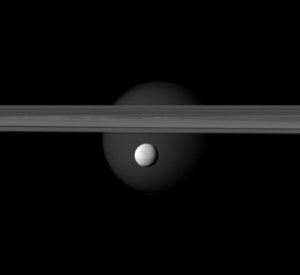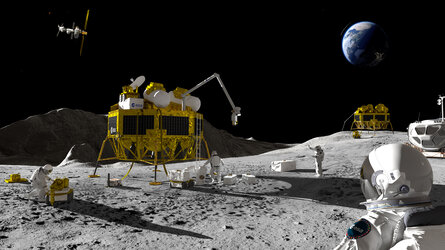Accept all cookies Accept only essential cookies See our Cookie Notice

About ESA
The European Space Agency (ESA) is Europe’s gateway to space. Its mission is to shape the development of Europe’s space capability and ensure that investment in space continues to deliver benefits to the citizens of Europe and the world.
Highlights
ESA - United space in Europe
This is ESA ESA facts Member States & Cooperating States Funding Director General Top management For Member State Delegations European vision European Space Policy ESA & EU Space Councils Responsibility & Sustainability Annual Report Calendar of meetings Corporate newsEstablishments & sites
ESA Headquarters ESA ESTEC ESA ESOC ESA ESRIN ESA EAC ESA ESAC Europe's Spaceport ESA ESEC ESA ECSAT Brussels Office Washington OfficeWorking with ESA
Business with ESA ESA Commercialisation Gateway Law at ESA Careers Cyber resilience at ESA IT at ESA Newsroom Partnerships Merchandising Licence Education Open Space Innovation Platform Integrity and Reporting Administrative Tribunal Health and SafetyMore about ESA
History ESA Historical Archives Exhibitions Publications Art & Culture ESA Merchandise Kids Diversity ESA Brand CentreLatest
Space in Member States
Find out more about space activities in our 23 Member States, and understand how ESA works together with their national agencies, institutions and organisations.
Science & Exploration
Exploring our Solar System and unlocking the secrets of the Universe
Go to topicAstronauts
Missions
Juice Euclid Webb Solar Orbiter BepiColombo Gaia ExoMars Cheops Exoplanet missions More missionsActivities
International Space Station Orion service module Gateway Concordia Caves & Pangaea BenefitsLatest
Space Safety
Protecting life and infrastructure on Earth and in orbit
Go to topicAsteroids
Asteroids and Planetary Defence Asteroid danger explained Flyeye telescope: asteroid detection Hera mission: asteroid deflection Near-Earth Object Coordination CentreSpace junk
About space debris Space debris by the numbers Space Environment Report In space refuelling, refurbishing and removingSafety from space
Clean Space ecodesign Zero Debris Technologies Space for Earth Supporting Sustainable DevelopmentLatest
Applications
Using space to benefit citizens and meet future challenges on Earth
Go to topicObserving the Earth
Observing the Earth Future EO Copernicus Meteorology Space for our climate Satellite missionsCommercialisation
ESA Commercialisation Gateway Open Space Innovation Platform Business Incubation ESA Space SolutionsLatest
Enabling & Support
Making space accessible and developing the technologies for the future
Go to topicBuilding missions
Space Engineering and Technology Test centre Laboratories Concurrent Design Facility Preparing for the future Shaping the Future Discovery and Preparation Advanced Concepts TeamSpace transportation
Space Transportation Ariane Vega Space Rider Future space transportation Boost! Europe's Spaceport Launches from Europe's Spaceport from 2012Latest

Saturn 'methane' image
Thank you for liking
You have already liked this page, you can only like it once!
The Cassini narrow-angle camera took this image of Saturn on 16 February 2004 from a distance of 66.1 million kilometres in a special filter which reveals clouds and hazes high in the atmosphere. The image scale is 397 kilometres per pixel.
The MT2 spectral filter samples a near-infrared region of the electromagnetic spectrum where methane gas absorbs light at a wavelength of 727 nanometres. It is one of three methane filters which will be used to estimate the altitudes and thickness of clouds and hazes.
Methane gas is uniformly mixed with hydrogen, the main gas in Saturn's atmosphere. Dark locales are places of strong methane absorption, relatively free of high clouds; the bright areas are places with high, thick clouds which shield the methane below. Differences in brightness from one place to the next reveal differences in the altitudes and thickness of the clouds.
This image reveals a high thick equatorial cloud and a relatively deep or thin haze encircling the pole, as well as several distinct latitude bands with different cloud height attributes. It also shows a high atmospheric disturbance, just south of the equator, which has persisted throughout the 1990s in images returned by the NASA/ESA Hubble Space Telescope.
Also visible in the image are four of Saturn's moons (clockwise from above right): Enceladus (499 kilometres across), Mimas (396 kilometres across), Tethys (1060 kilometres across) and Rhea (1528 kilometres across). The brightnesses of Mimas and Enceladus have been enhanced by a factor of three.
-
CREDIT
NASA/JPL/Space Science Institute -
LICENCE
ESA Standard Licence

Veiled worlds

Saturn’s rings, Titan and Enceladus

Swirls of clouds on Saturn

Blue Saturn















 Germany
Germany
 Austria
Austria
 Belgium
Belgium
 Denmark
Denmark
 Spain
Spain
 Estonia
Estonia
 Finland
Finland
 France
France
 Greece
Greece
 Hungary
Hungary
 Ireland
Ireland
 Italy
Italy
 Luxembourg
Luxembourg
 Norway
Norway
 The Netherlands
The Netherlands
 Poland
Poland
 Portugal
Portugal
 Czechia
Czechia
 Romania
Romania
 United Kingdom
United Kingdom
 Slovenia
Slovenia
 Sweden
Sweden
 Switzerland
Switzerland

























